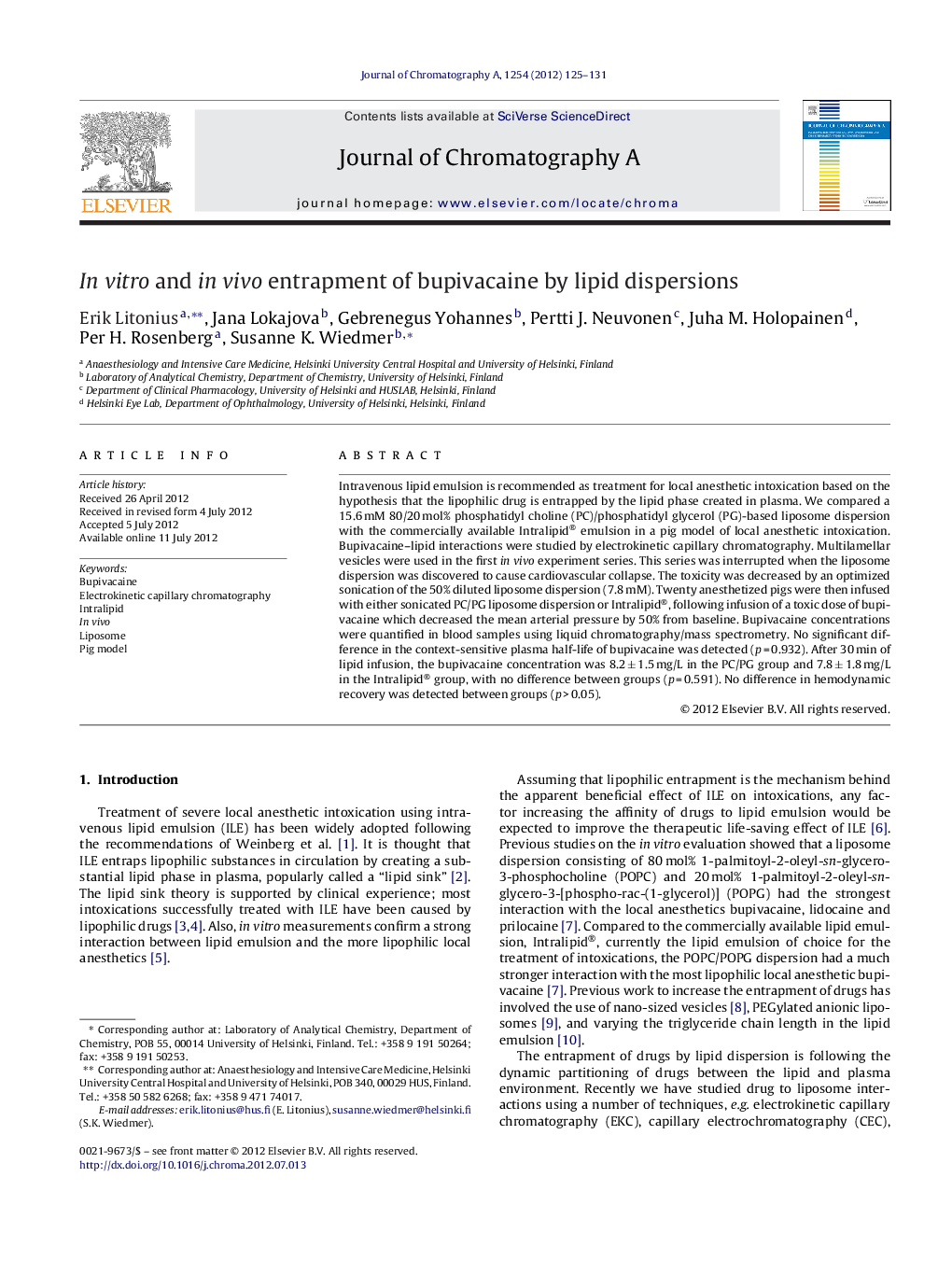| Article ID | Journal | Published Year | Pages | File Type |
|---|---|---|---|---|
| 1202236 | Journal of Chromatography A | 2012 | 7 Pages |
Intravenous lipid emulsion is recommended as treatment for local anesthetic intoxication based on the hypothesis that the lipophilic drug is entrapped by the lipid phase created in plasma. We compared a 15.6 mM 80/20 mol% phosphatidyl choline (PC)/phosphatidyl glycerol (PG)-based liposome dispersion with the commercially available Intralipid® emulsion in a pig model of local anesthetic intoxication. Bupivacaine–lipid interactions were studied by electrokinetic capillary chromatography. Multilamellar vesicles were used in the first in vivo experiment series. This series was interrupted when the liposome dispersion was discovered to cause cardiovascular collapse. The toxicity was decreased by an optimized sonication of the 50% diluted liposome dispersion (7.8 mM). Twenty anesthetized pigs were then infused with either sonicated PC/PG liposome dispersion or Intralipid®, following infusion of a toxic dose of bupivacaine which decreased the mean arterial pressure by 50% from baseline. Bupivacaine concentrations were quantified in blood samples using liquid chromatography/mass spectrometry. No significant difference in the context-sensitive plasma half-life of bupivacaine was detected (p = 0.932). After 30 min of lipid infusion, the bupivacaine concentration was 8.2 ± 1.5 mg/L in the PC/PG group and 7.8 ± 1.8 mg/L in the Intralipid® group, with no difference between groups (p = 0.591). No difference in hemodynamic recovery was detected between groups (p > 0.05).
► Multilamellar POPC/POPG vesicles toxic for pigs. ► Sonication of vesicles decreased toxicity. ► Strong in vitro bupivacaine–POPC/POPG interactions. ► Unexpectedly no difference in bupivacaine plasma concentrations between pigs treated with POPC/POPG or Intralipid®. ► No difference in pigs’ recovery from bupivacaine intoxication.
